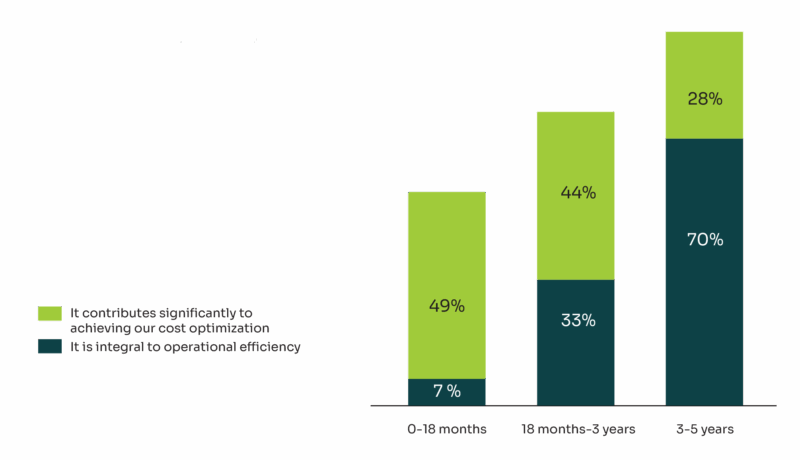The case for companies to optimize their indirect spend is compelling – there are many areas of spending, and therefore many opportunities to make improvements. So why do companies find it hard to seize these opportunities?
As mentioned at the outset, many companies, particularly those in manufacturing industries, habitually focus much more strongly on direct spending, so tend to miss opportunities to improve efficiency in their indirect cost base. Although widely understood, the distinction between direct and indirect spending can be something of a distraction – all external spending, whether direct or indirect, should be carried out as a collaboration between procurement specialists and operational experts. In practice, however, procurement professionals frequently have little or no involvement in indirect spending decisions that commonly include major cost categories such as transport services or IT software and hardware.
Another common issue that prevents companies from achieving cost excellence is inadequate data – or a complete absence of data – on their indirect spending. If procurement teams are not involved in these spending decisions, processes are likely to vary from one department to another. Companies may not produce purchase orders to document their spending and consequently will have very limited transparency.
Similarly, groups assembled from mergers and acquisitions often continue to operate siloed information systems and so find it impossible to gain a comprehensive overview of their spending. However, even in cases where data is available, it is not necessarily harnessed effectively to deliver efficiency gains. For example, data that is not clean and well structured cannot be analysed by AI tools to identify efficiencies or gain insights into spending patterns.
Deficiencies in data systems and procurement processes frequently lead to a further challenge: procurement teams find that they cannot demonstrate the value they create in optimizing indirect spend because it is not visible in the P&L. If the procurement team negotiates savings in indirect categories, these must feed through to the budgeting process so that the savings are captured and fed into the budgets for future periods. If that loop is not closed, questions inevitably arise over the value that the procurement function adds to the organization.

Failure to close this loop can lead to perverse outcomes. For example, if the procurement team negotiates a 10% saving on pens, but this saving is not fed back into departmental budgets, the budget for pens will stay the same and the department will be free to buy more in future, without busting its budget. No saving is realized, and the benefits of the procurement team’s work are lost.
By contrast, where procurement, operational, and budget processes are well aligned, not only can cost savings be properly documented but the money saved can be redeployed to support business objectives. Take the example of a successful effort by procurement and marketing teams to reduce a company’s digital marketing costs. This could be followed by an agreement to invest half the sum that has been saved back into digital marketing to generate additional sales, with agreed KPIs to monitor the effectiveness of this extra allocation. A scenario like this illustrates clearly the virtuous circle in action: by closing the loop between procurement savings and the budgeting process, the company both saves money and creates the headroom to invest more in growth.
A more rigorous focus on these indirect cost categories also offers opportunities to improve risk management, particularly around the increasing quantity of sustainability regulation coming into force. By embedding sustainability criteria in procurement processes for indirect spend, companies can identify opportunities related to sustainable purchasing and mitigate risks in areas such as supplier selection and the emissions impact of their indirect spend.








